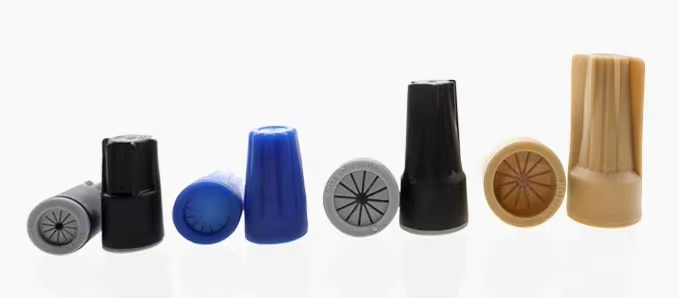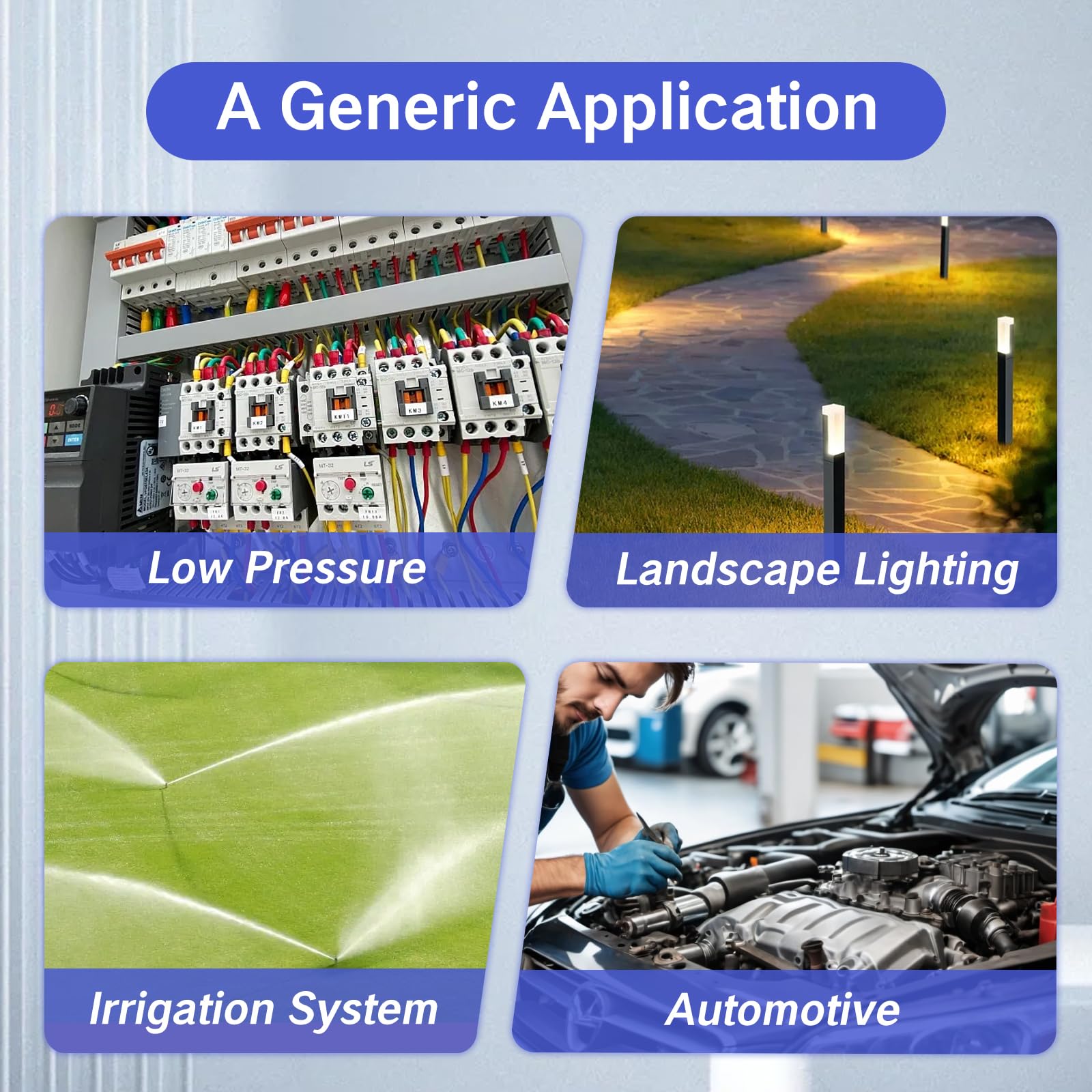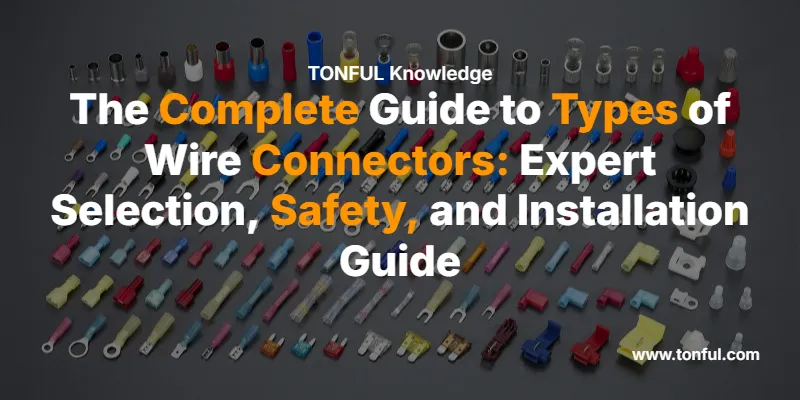Wire connectors are essential electrical components that join two or more wires together to create secure, reliable electrical connections. The right connector type ensures electrical safety, prevents failures, and meets code compliance requirements. Understanding the different types of wire connectors available helps you choose the safest, most appropriate option for your specific electrical application.
⚡ Safety Warning: Always turn off power at the circuit breaker before working with electrical connections. Improper wire connections can cause electrical fires, electrocution, or equipment damage. When in doubt, consult a licensed electrician.
What Are Wire Connectors and Why Do They Matter?

Wire connectors are devices designed to join electrical wires together while maintaining electrical continuity and providing insulation. They create secure connections that prevent wire separation, reduce electrical resistance, and protect against environmental factors like moisture and corrosion.
Key purposes of wire connectors:
- Maintain electrical continuity between wires
- Provide mechanical strength and strain relief
- Offer electrical insulation and safety protection
- Enable easy disconnection for maintenance
- Ensure compliance with electrical codes (NEC, UL standards)
Types of Wire Connectors: Complete Classification Guide
1. Wire Nuts (Twist-On Wire Connectors)
Definition: Plastic caps with internal metal threads that twist onto stripped wire ends to create secure connections.
Best Applications:
- Residential wiring projects
- Junction box connections
- Light fixture installations
- Switch and outlet wiring
Advantages:
- Easy to install and remove
- Reusable connections
- UL listed for safety
- Available in multiple sizes
Limitations:
- Not suitable for high-vibration environments
- Requires proper wire stripping
- Can loosen over time without proper installation
💡 Expert Tip: Choose wire nut size based on the total cross-sectional area of all wires being connected. A properly installed wire nut should require 3-5 full turns and hold wires securely without slipping.
2. Crimp Connectors
Definition: Metal sleeves that compress onto wire ends using a crimping tool to create permanent, gas-tight connections.
Types of Crimp Connectors:
| Connector Type | Wire Gauge Range | Primary Use | Insulation Type |
|---|---|---|---|
| Butt Splice | 22-10 AWG | End-to-end connections | Heat shrink or vinyl |
| Ring Terminal | 22-4/0 AWG | Bolt/screw connections | Vinyl or nylon |
| Spade Terminal | 22-10 AWG | Quick disconnect | Vinyl or bare |
| Bullet Connector | 22-10 AWG | Automotive wiring | Vinyl or nylon |
Best Applications:

- Automotive electrical systems
- Marine wiring (with heat shrink)
- Industrial control panels
- Permanent wire splices
Advantages:
- Extremely secure connection
- Vibration resistant
- Gas-tight seal prevents corrosion
- Professional appearance
Safety Considerations:
- Requires proper crimping tool for UL compliance
- Improper crimping can cause connection failure
- Must match connector size to wire gauge exactly
3. Lever Wire Connectors (Wago-Style)
Definition: Spring-loaded connectors that use lever mechanisms to clamp wires without tools.
Key Features:
- Tool-free installation
- Transparent housing for visual verification
- Rated for both solid and stranded wire
- Reusable connections
Comparison: Lever vs. Traditional Wire Nuts
| Feature | Lever Connectors | Wire Nuts |
|---|---|---|
| Installation Speed | Very Fast | Moderate |
| Tool Requirements | None | None |
| Visual Verification | Yes | No |
| Reusability | Excellent | Good |
| Cost per Connection | Higher | Lower |
| Code Acceptance | NEC Approved | NEC Standard |
Best Applications:
- Commercial lighting projects
- Control panel wiring
- Temporary connections
- Applications requiring frequent disconnection
⚡ Safety Warning: Ensure lever connectors are rated for your specific voltage and current requirements. Not all lever connectors are suitable for branch circuit wiring.
4. Push-In Wire Connectors
Definition: Connectors that use spring mechanisms to grip inserted wires without external clamping devices.
Types:
- Standard Push-In: Basic spring-loaded mechanism
- Premium Push-In: Enhanced spring design with visual indicators
- Multi-Port: Single connector accepting multiple wires
Applications:
- Residential junction boxes
- Light fixture connections
- Quick repairs and modifications
Installation Requirements:
- Strip wire to exact length (typically 0.5-0.6 inches)
- Insert wire fully until seated
- Verify connection by gentle tugging
5. Terminal Blocks and Strips
Definition: Modular connectors that allow multiple wires to connect at organized termination points.
Types of Terminal Blocks:
| Block Type | Connection Method | Typical Use | Wire Range |
|---|---|---|---|
| Screw Terminal | Screw clamp | Control panels | 28-8 AWG |
| Spring Clamp | Spring pressure | DIN rail mounting | 28-12 AWG |
| Barrier Strip | Screw terminal | Panel boards | 22-8 AWG |
| Feed-Through | Push-in/screw | Distribution | 24-10 AWG |
Best Applications:
- Industrial control systems
- Electrical panel organization
- Multi-point connections
- Maintenance-friendly installations
Selection Criteria:
- Current rating must exceed circuit requirements
- Voltage rating appropriate for application
- Proper wire gauge compatibility
- Environmental rating (IP rating) for location
6. Specialty Wire Connectors
Grounding Connectors
Purpose: Specifically designed for equipment grounding connections per NEC requirements.
Types:
- Ground screws with grounding plates
- Grounding lugs for service equipment
- Grounding bushings for conduit systems
Waterproof Connectors
Features:
- IP67 or IP68 environmental ratings
- Sealed housing construction
- Corrosion-resistant materials
Applications:
- Outdoor lighting systems
- Underground wiring
- Marine electrical installations
High-Temperature Connectors
Specifications:
- Rated for temperatures above 90°C
- Special insulation materials
- Appliance and equipment connections
Wire Connector Selection Guide
Step-by-Step Selection Process
- Determine Wire Specifications
- Wire gauge (AWG) of all wires
- Number of wires to connect
- Solid vs. stranded wire type
- Assess Environmental Conditions
- Indoor vs. outdoor installation
- Temperature range requirements
- Moisture/chemical exposure
- Check Electrical Requirements
- Voltage rating needed
- Current carrying capacity
- UL listing requirements
- Consider Installation Factors
- Available workspace
- Tool requirements
- Maintenance access needs
- Verify Code Compliance
- NEC section 110.14 requirements
- Local electrical code variations
- Inspection acceptance
Quick Reference: Connector Selection by Application
| Application | Recommended Connector | Why This Choice |
|---|---|---|
| Residential Junction Box | Wire Nuts or Lever Connectors | Code compliant, easy installation |
| Automotive Wiring | Crimp Connectors | Vibration resistant, reliable |
| Control Panel | Terminal Blocks | Organized, maintenance friendly |
| Outdoor Lighting | Waterproof Wire Nuts | Weather protection, code compliant |
| Temporary Connections | Lever Connectors | Reusable, tool-free |
Installation Best Practices and Safety Guidelines
Proper Wire Preparation
- Strip Wire to Correct Length
- Wire nuts: 3/4 inch minimum strip length
- Crimp connectors: Length per manufacturer specification
- Push-in connectors: Exact length marked on connector
- Clean Wire Surfaces
- Remove oxidation with wire brush
- Ensure bright, clean copper appearance
- Apply antioxidant compound for aluminum wire
💡 Expert Tip: Use a wire gauge tool to verify actual wire size before selecting connectors. Wire labels can sometimes be incorrect or misleading.
Installation Safety Checklist
- Power confirmed OFF at circuit breaker
- Voltage tester confirms no electrical energy
- Proper PPE worn (safety glasses, insulated gloves)
- Connector rated for application voltage/current
- Wire gauge matches connector specifications
- Proper tools available and in good condition
- Installation follows manufacturer instructions
Common Installation Mistakes to Avoid
❌ Critical Errors:
- Using undersized connectors for wire gauge
- Insufficient wire stripping length
- Over-tightening screw terminals
- Mixing copper and aluminum wires without proper connectors
- Installing connectors in wet locations without proper rating
⚡ Safety Warning: Never use electrical tape as the sole means of wire connection. Tape is for insulation only and cannot provide the mechanical strength required by electrical codes.
Troubleshooting Wire Connector Problems
Signs of Connection Problems
| Symptom | Possible Cause | Solution |
|---|---|---|
| Flickering lights | Loose connection | Retighten or replace connector |
| Warm connector | Undersized or corroded | Replace with proper size/type |
| Intermittent power | Vibration loosening | Use vibration-resistant connector |
| Corrosion visible | Moisture infiltration | Install weatherproof connector |
When to Call a Professional
Contact a licensed electrician for:
- Service panel connections
- High-voltage applications (240V+)
- Aluminum wire connections
- Code compliance questions
- Complex multi-circuit installations
Frequently Asked Questions
What wire connector should I use for outdoor applications?
Use connectors specifically rated for wet locations with appropriate IP ratings. Waterproof wire nuts or sealed crimp connectors with heat shrink tubing provide the best protection against moisture infiltration.
Can I reuse wire nuts?
Yes, wire nuts are reusable if they’re in good condition with no cracks or damaged threads. However, replace them if the internal threads are worn or if they don’t grip wires securely.
How do I know if my wire connector is properly installed?
A properly installed connector should hold wires securely with no movement when gently tugged. For wire nuts, you should not see any bare copper wire outside the connector, and the connection should require 3-5 full turns to install.
Are push-in connectors as reliable as wire nuts?
Quality push-in connectors that meet UL standards are reliable for appropriate applications. However, they may not be suitable for high-vibration environments or where frequent disconnection is required.
What’s the difference between residential and commercial wire connectors?
Commercial connectors often have higher current ratings, enhanced environmental protection, and may require different installation methods. Always verify that connectors meet the specific requirements of your installation type.
Can I use automotive crimp connectors for household wiring?
No, automotive connectors are typically not UL listed for building wiring and may not meet NEC requirements. Use only connectors specifically rated and listed for your application.
How do I connect different wire gauges together?
Use connectors rated for the range of wire gauges being connected. Some specialty connectors are designed specifically for transitioning between different wire sizes while maintaining proper current ratings.
What should I do if a wire connector feels warm during operation?
A warm connector indicates a high-resistance connection that could lead to failure or fire. Turn off power immediately and replace the connector with a properly sized, correctly installed unit.
Professional Selection Criteria
Code Compliance Requirements
NEC Section 110.14 Specifications:
- Connectors must be listed by recognized testing laboratory (UL, ETL)
- Temperature rating must match or exceed conductor insulation
- Termination method must be suitable for conductor material
- Environmental conditions must be considered in selection
Quality Indicators
Look for these certification marks:
- UL Listed mark for safety compliance
- CSA certification for Canadian applications
- NEMA ratings for environmental protection
- RoHS compliance for environmental safety
💡 Expert Tip: Always purchase wire connectors from reputable electrical suppliers. Counterfeit connectors may not meet safety standards and can create serious fire hazards.
Conclusion: Choosing the Right Wire Connector
Selecting the appropriate wire connector type ensures electrical safety, code compliance, and long-term reliability. Wire nuts remain the standard for most residential applications, while crimp connectors excel in automotive and industrial environments. Lever connectors offer convenience for commercial applications, and specialty connectors address specific environmental challenges.
Key takeaways for successful wire connector selection:
- Match connector specifications to wire gauge and application requirements
- Prioritize safety certifications (UL listing) over cost savings
- Consider environmental conditions and maintenance requirements
- Follow manufacturer installation instructions exactly
- When in doubt, consult with a licensed electrician
Remember: Proper wire connections are critical for electrical safety. Taking time to select and install the right connector type prevents electrical failures, reduces fire risk, and ensures long-term system reliability.
For complex electrical projects or questions about code compliance, always consult with a licensed electrician in your area. Electrical work may require permits and professional installation depending on local regulations.

